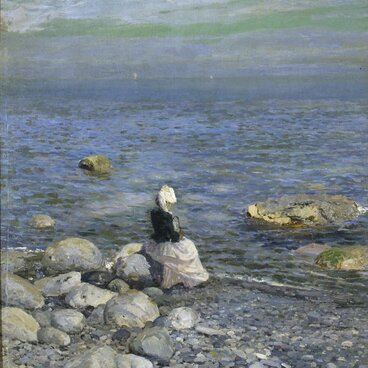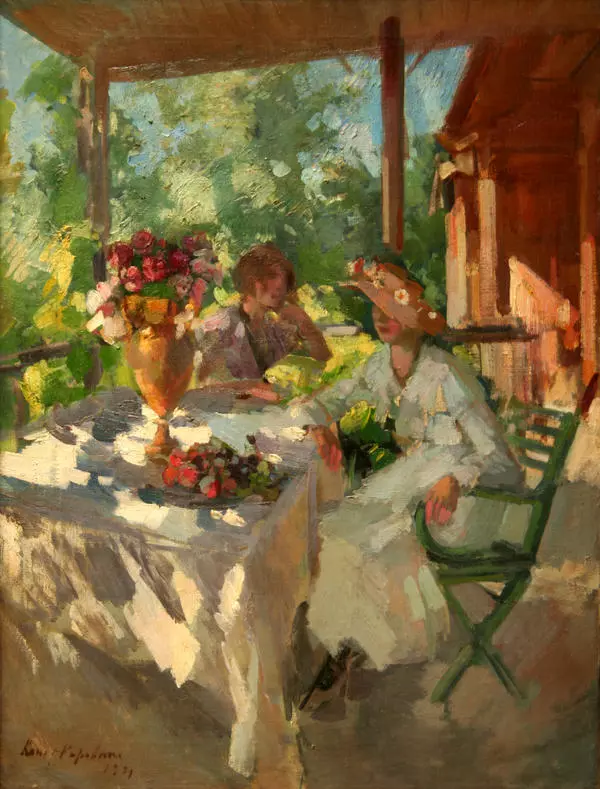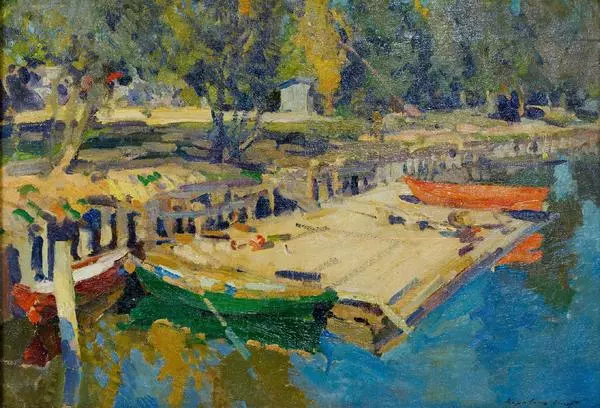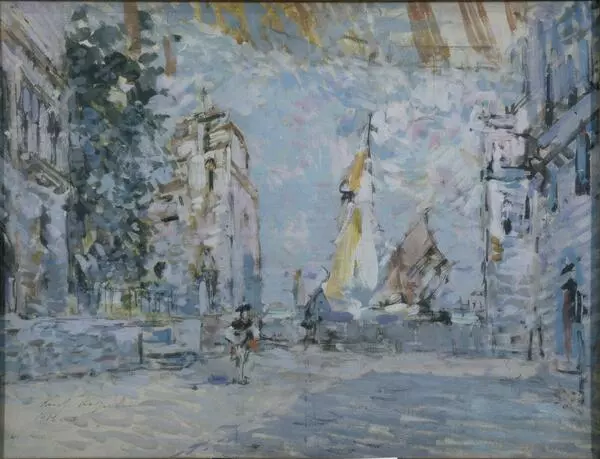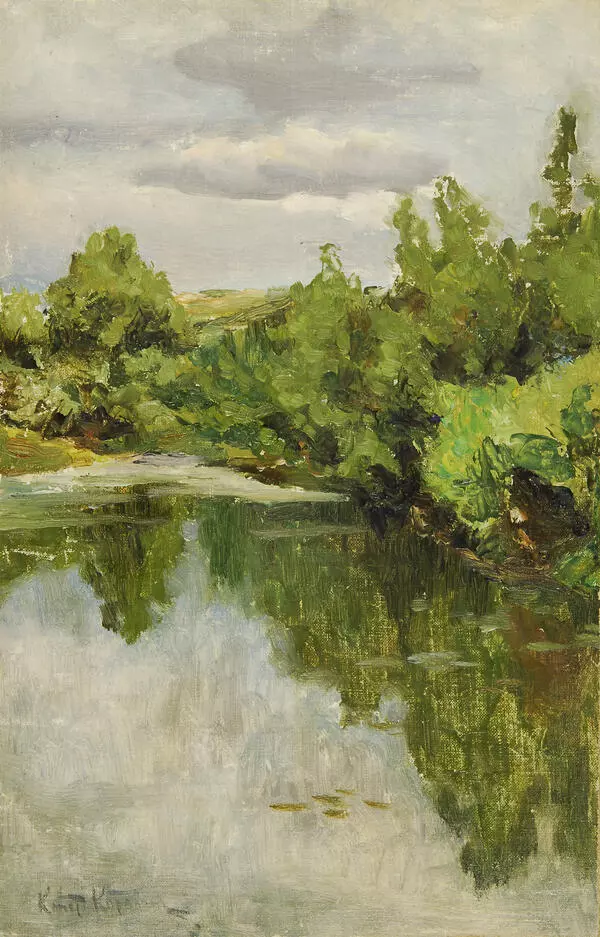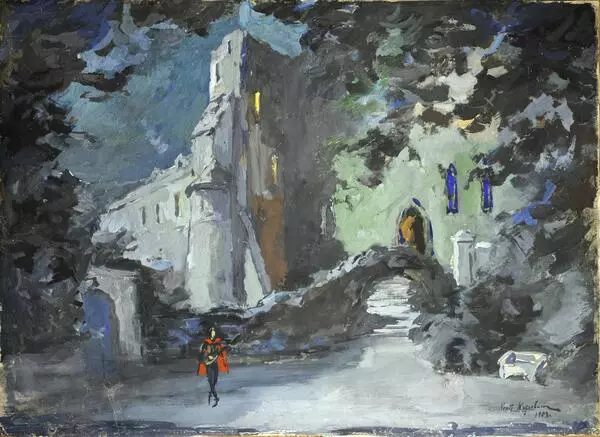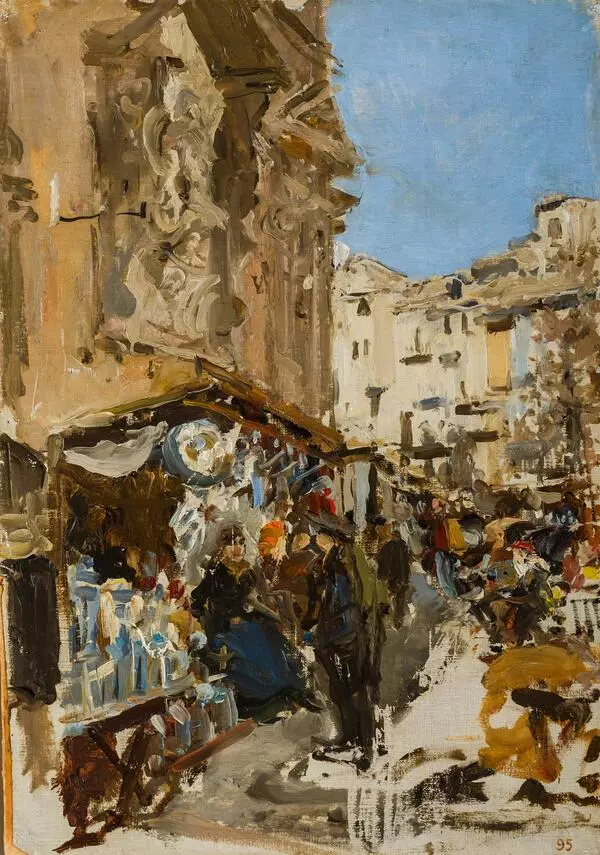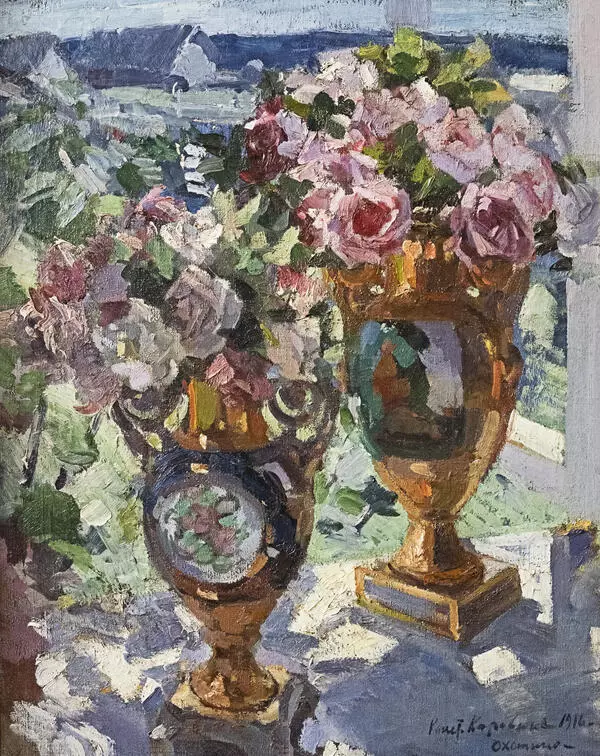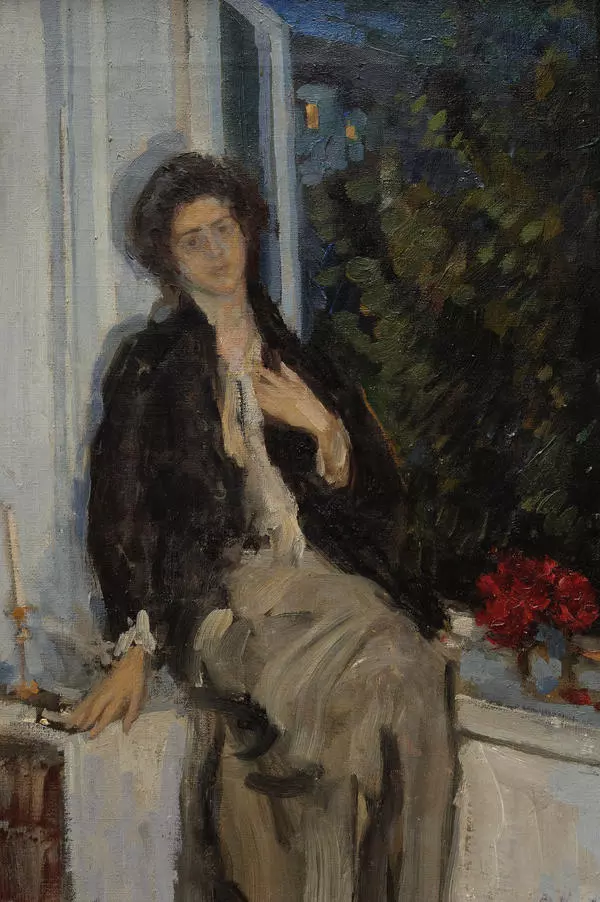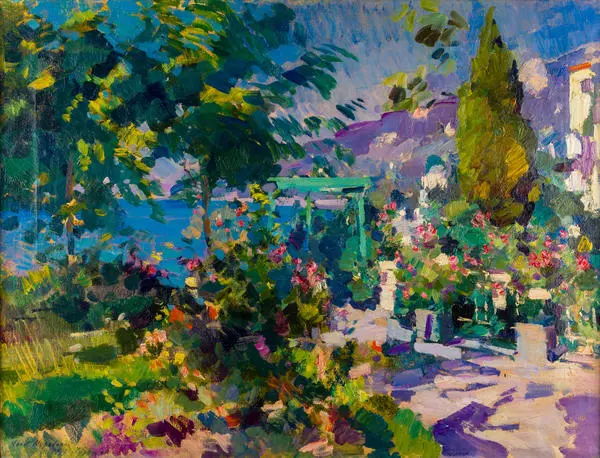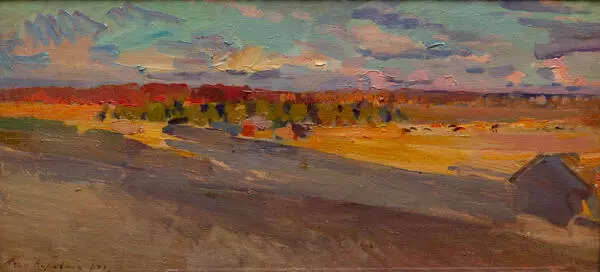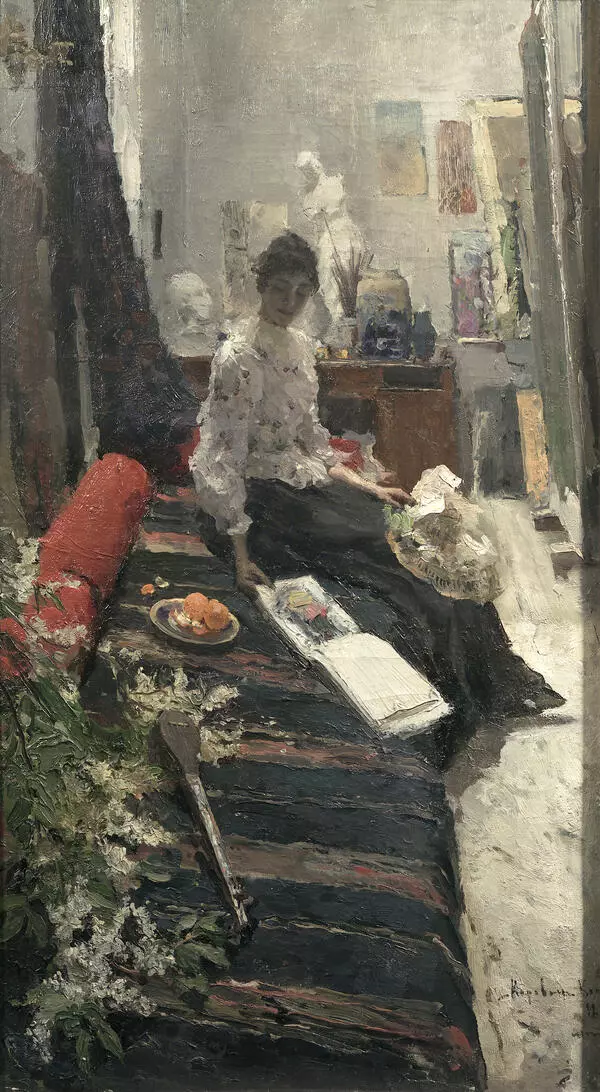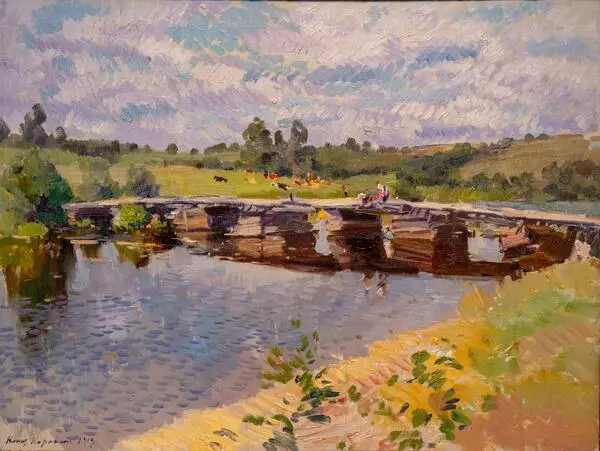The exhibition of the Sevastopol Art Museum named after Mikhail Kroshitsky features the painting “Fishermen’s Bay. Sevastopol” made in 1916 by the great Russian artist Konstantin Alexeevich Korovin.
Konstantin Korovin was a landscape painter and portraitist who also painted still lifes and worked in the field of scenic design. He studied at the Moscow School of Painting, Sculpture and Architecture, first at the architectural and then at the painting department. His teachers included Illarion Mikhailovich Pryanishnikov, Vasiliy Grigoryevich Perov, Alexey Kondratyevich Savrasov, and Vasily Dmitrievich Polenov. In 1882, he studied for several months at the Academy of Arts and later taught at the Stroganov School.
The painting from the museum collection depicts the very recognizable Artillery Bay in Sevastopol and the Kornilov Quay with the now defunct fish-cutting house illuminated by the sunset rays. The artist turned to this motif several times and painted it at different times of the day.
In 1916, the famous master Konstantin Korovin was treated in the Sevastopol hospital for several months. At the time, he, an academician of painting, was forbidden by doctors to paint. He sorrowfully reported about it in a letter to Telyakovsky, the Director of the Imperial Theaters. Still, in that period, Korovin managed to create a number of colorful paintings. As if in counterbalance to his woe, as if forgetting the dramatic sad circumstances, he painted buoyant, upbeat, and colorful landscapes, filled with bright sunlight and air. Despite their sketchy nature, all the works created there were compositionally complete, “well-directed”, painted easily and soundly, in broad and sweeping strokes that seem fast at first glance, but are in fact thoroughly elaborate. All researchers of Korovin’s work unanimously note the artistic value of Sevastopol studies. They are painted with lightness, virtuosity, and vibrancy. They are very accurate in capturing color relationships, the “impression” of a bright and sunny summer day in a southern town.
Today, “Fishermen’s Bay” is one of the most popular
works displayed in the museum, often reproduced in various publications. It
came to the Sevastopol Museum in 1972 through the USSR Ministry of Culture from
Argentina, where it had been in the collection of Ye. I. Korsakova.


